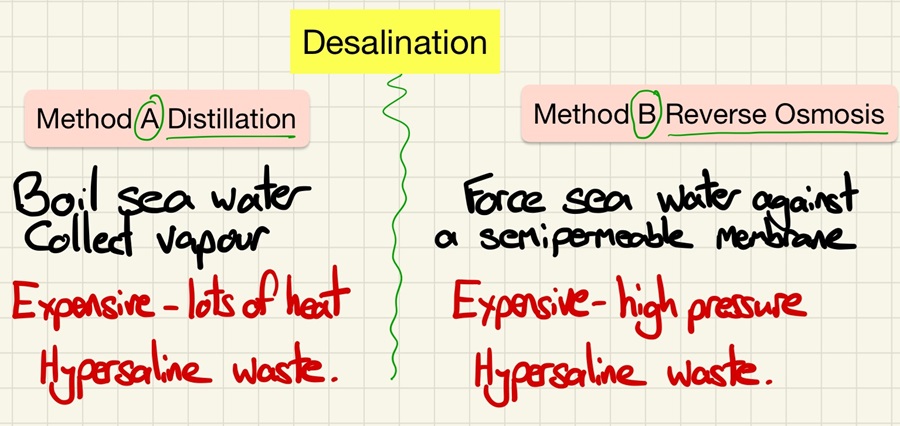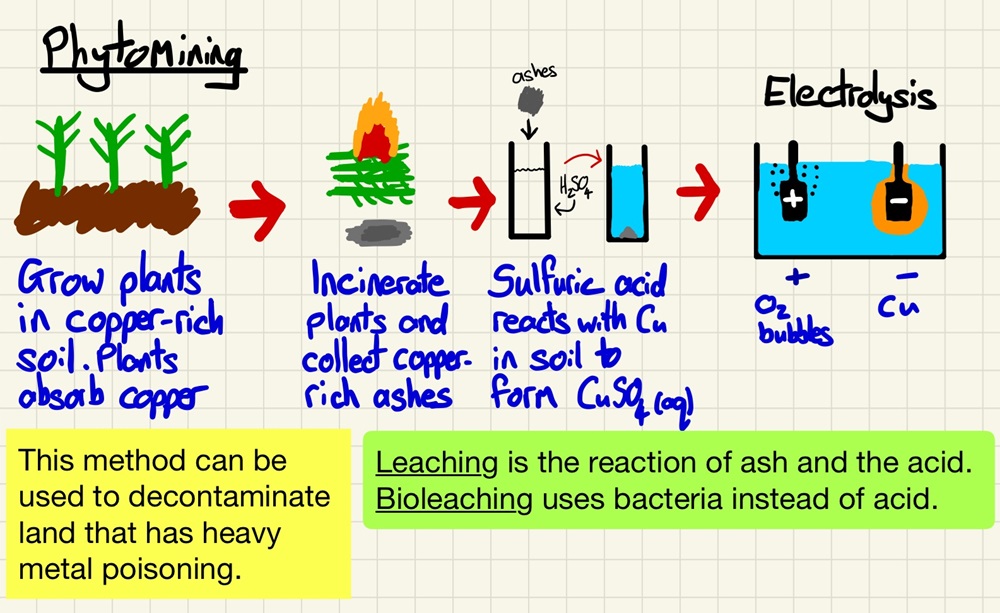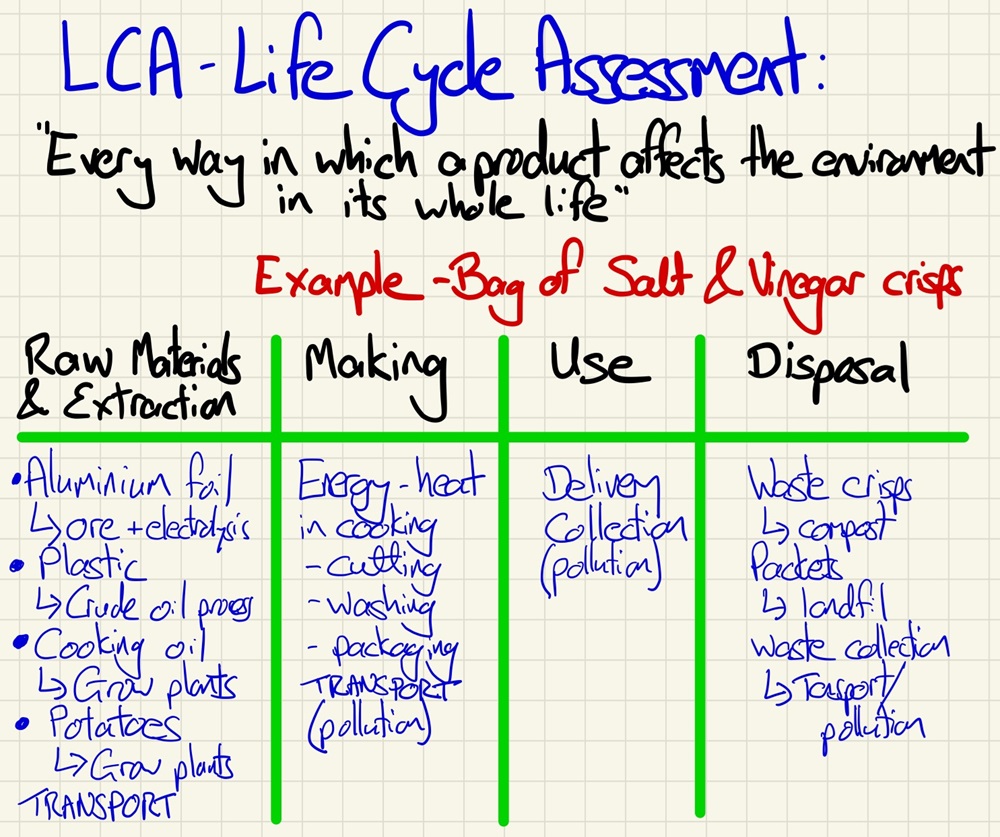Using Resources
What we are learning:
Earth's resources and sustainable development:

We use Earth's resources for many things: food, shelter, warmth, transport and other less essential things. Make sure that you have a clear understanding of these resources and that you can give examples. Along with this, make sure that you can identify which are finite (opposite of infinite, they will run out) and which are renewable. Crude oil is used for fuel, plastics, cosmetics and even road tar but we have to face facts, it is a finite resource that is running out. Wood from trees is renewable as long as we plant as many trees as are cut down. Chemistry can and does enhance agricultural processes which, in turn, reduces our need for finite resources wood instead of plastics, natural fibres instead of synthetic fibres, biofuels instead of petrol and diesel.
Potable water:

Potable water is another way of saying "drinking water". It is not pure as there are dissolved substances in it still. To make water safe to drink, water is taken from reservoirs, lakes and rivers and undergoes screening to remove large items then is passed through filter beds of finer then finer sands to trap particles of sediment. Finally, to make the water safe to drink, all pathogens need to be neutralised and the most popular method is to add chlorine but some regions use ozone or uv light.
Desalination:

In areas where there is no plentiful supply of freshwater but there is a supply of sea water (hot countries near to the coast and on cruise ships) sea water can be made potable by the process of desalination. Firstly - distillation, this is very expensive because of the heating costs. Secondly - reverse osmosis, this is expensive because of the very high pressure needed for the process. The ways that cruise ships and nuclear submarines can last so long without fetching fresh water from land is by reverse osmosis. There is also a required practical in which you will look at pH of water samples and their levels of dissolved salts.
Wastewater treatment:

When the potable water leaves homes, schools, businesses, factories and farms, it it far from drinkable. Wastewater will contain "solid organic matter" (a polite way of saying poo) and bacteria that can cause serious illnesses and we do not want to return to the days of cholera. When sewage arrives at the sewage treatment plants, it once again begins with the process of screening. This time, however, the matter that is screened off has to be incinerated because of the bacteria content. The sewage then goes into large tanks and the sludge that sinks to the bottom or floats to the top is scraped off and undergoes anaerobic digestion before being incinerated. The remaining water is called effluent and this has air bubbled through it to promote aerobic digestion of any remaining matter. When this is complete, the effluent can be sent into rivers.
Earth's limited metal ore deposits:

Metals are a finite resource and we finding it harder and harder to find high yield deposits. We are currently mining and quarrying deposits that we would not have even thought of exploring 100 years ago. Copper is our best example, we are more and more reliant on our electrical devices and all power cables and most water pipes rely on this metal. In order to get more copper, we have moved from traditional mining and reduction techniques to phytomining. This is an ingenious method in which plants are grown over soil that is rich in copper. The plants are then harvested and burned. The ashes can then have the more concentrated copper extracted. Bioleaching is when bacteria react with the low grade ore and produce a leachate which can be treated and have the copper extracted. If the ashes etc are reacted with sulfuric acid then the resulting copper sulfate can be electrolysed.
The method of phytomining can also be used to remove heavy metals from contaminated land.
Life Cycle Assessments (LCAs):

These are defined as the analysis of the potential environmental impacts of products or activities during their entire life from the extraction of the raw materials to the processing of any associated waste. It is really important to consider this full range as there may be little impact on the environment while the item is in your custody, however, there may have been a huge impact during the processing of raw materials or the waste my not be recycled and will not biodegrade. These LCAs are available to monitor processes used by businesses but also to allow us, the consumers to find out more about products and services before we buy/use them. This way, we can make an ethical decision too.
Reducing our needs for resources:

There is a really important reason that the "three Rs" are in this order. They are Reduce, Reuse and Recycle. Reduction is the most effective way to save resources and save the impact on our environment. It is also the best way to be sustainable. If we are not taking any more resources out then there will be enough for future generations. We will also save the energy use and materials used during the extraction/processing stage as well as the waste at the end.
Rocks, cement, gravel, clay, ceramics, plastics and glass can be recycled into new products. Even if they cannot be turned back into what they once were, they can be manufactured into a new product which will reduce the raw material needed for that product (as some of it is recycled) and it will stop this material form going to waste. Metals are the best material for this as they can be melted down and recast into new items.
Key words/terms for this topic
Aeration Aerobic Digestion Anaerobic Digestion Biodegradable Bioleaching Blackwater Distillation Effluent Filtering Finite resources Greywater Leaching Life Cycle Assessments (LCAs) Phytomining Potable Water Recycling Renewable resources Resources Reverse osmosis Screening Sedimentation Sewage Sludge Sterilisation Sustainability Sustainable Development
Curriculum Health Check:
Q: How can we reduce the amount of new materials manufactured?
A: Reduce, reuse & unicycle
B: Reduce, refuse & recycle
C: Redact, reuse & recycle
D: Reduce, reuse & recycle
What you need to know
Our resources come from the Earth, whether it is food grown in its soil, fuel from trees, coal and oil or minerals mined from its crust, the Earth, its atmosphere and oceans are the sources that sustains life. These resources are finite.

Chemistry is vital in making these resources more sustainable for future generations. You need to tell the difference between finite and renewable resources. Information may come in the form of graphs and data tables for you to interpret.

Potable water is safe drinking water. Chemically it is not pure as it has a variety of dissolved ions and gases. In different parts of the world, different methods are used to make water safe to drink.

In the UK -

• We use rainwater in lakes and rivers as it has very little dissolved in it.

• We then pass this through filter beds to remove sediments.

• Then sterilise the water with chlorine, ozone or UV light.

You need to be able to describe these stages and state why each one is competed. In countries that do not have our rainfall levels, desalination (removing salt) is an option. Here, fresh water is taken from sea water in the expensive process of wither distillation or reverse osmosis.

When potable leaves our homes, businesses and factories, it needs to be treated before returning to rivers and the sea.

• Sewage is screened to remove grit.

• Then the sediments settles and the sludge is removed.

• The sewage sludge is attacked by bacteria for anaerobic digestion to break it down.

• Finally, aerobic treatment from microbes to break down the last of the biological matter.

You should be able to describe that potable water is relatively easy to get from wastewater. Look at developments such as the LifeStraw.

Life cycle assessments (LCAs) assess the impact a product has on the environment from start to finish:

• Obtaining the raw materials and processing them,

• Making it and its packaging,

• How it is used through its life

• Disposal and any transport.

You need to be able to evaluate data to se which products have the biggest impact on the environment. The most common one is the comparison between paper and plastic shopping bags.

Finally, you need to be able to show ways of reducing the use of resources. Starting with Reduce, Reuse and Recycle. Look into a variety of materials like glass, ceramics, metals and plastics, see how they affect the environment from oil exploration to giant pen quarries. Given data, you need to be able to evaluate ways of reducing the use of our limited resources.

Extra topics needed for the Higher Tier papers:

Because we use so much metal for our modern lives, the easily obtained/high grade ores are mostly gone so we need better ways of getting low grade ores out.

Phytomining involved growing plants in soil containing metals. Harvest the plants then burn them. You can collect the metals from the ash. This method is also used to decontaminate soil that contains toxic metals.

Bioleaching relies on bacteria to make leachate solutions rich in these metals which can be electrolysed.

This page was updated on: 19th February 2024

